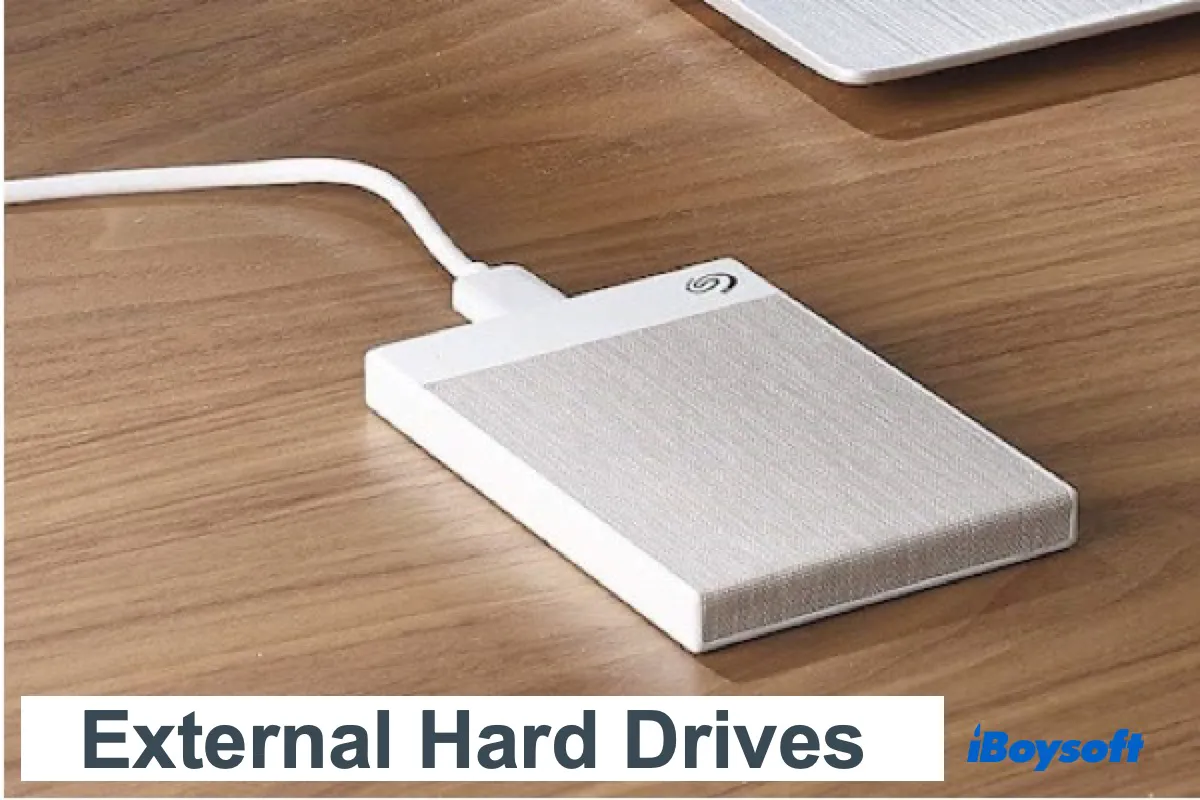Basic information about an external hard drive
Let's take comprehensive learning of the external hard drive.
What is an external hard drive?
Originally, the internal hard drive of your computer is the only storage space to save your data, but with the rapid development of the information era, it's far not enough. So, to satisfy your needs for storing extra data, the external hard drive came out.
Unlike the internal hard drive that's inside a computer, an external hard drive is connected to the computer from outside via USB, FireWire, or wirelessly. As one of the external storage devices like the common USB flash drive, the external hard drive is also portable and mobile.

Source: Forbes.com
Usage of external hard drives
There are two main purposes for you to use external hard drives. One is expanding the capacity of your computer when the internal storage space is not sufficient. The other is backing up data of your computer in case of data loss due to internal hard disk corruption or hardware damage.
Besides, as the external hard drive is portable, it also enables data exchange between computers locally.
Available Capacity
Usually, the storage space of an external hard drive is considerable. Unlike most USB flash drives are only a few dozens of GB, external hard drives in the market are commonly in 320GB, 500GB, 600GB, 640GB, 900GB, 1000GB (1TB), 1.5TB, 2TB, 2.5TB, 3TB, 3.5TB, 4TB, even up to 12TB capacity.
But there also have some relatively small storage external hard disks. Those are 1.8-inch external hard drives in 10GB, 20GB, 40GB, 60GB, or 80GB.
Data read and write speeds
External hard drives mainly have three interfaces: USB, FireWire (IEEE1394), and eSATA. The data transmission speed of the external hard drive varies from the interface.
USB 2.0 theoretically supplies 60 MB/s bandwidth, but overhead typically reduces this to an effective 25 MB/s to 30 MB/s. For the USB 3.0, its nominal transfer rate is 625MB/s. And USB 3.1, released in 2013, has up to 1250 MB/s data transfer speed. For the later USB 3.2 was released in 2017, with a data rate of up to 2500 MB/s.
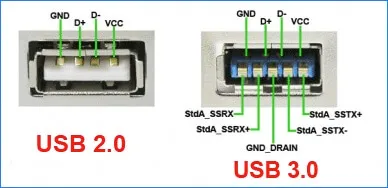
And the IEEE1394 interface transfer speed is 50~100MB/s. When it comes to eSATA, it can achieve such as SATA 1.5Gb/s or SATA 3Gb/s transfer speed.
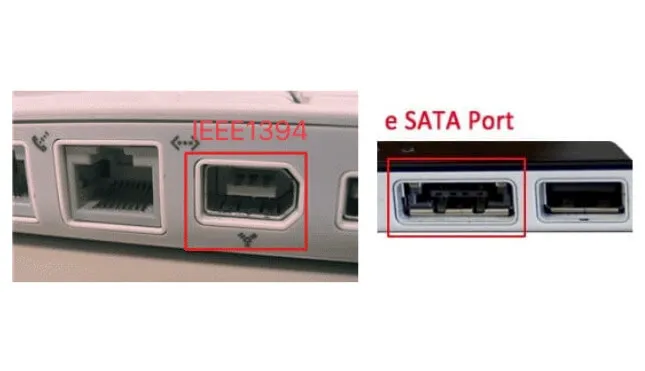
In general terms, it only takes seconds (or less) to minutes to read and write the data, of course, according to the sizes of data units.
Common external hard drive types, file systems, and brands
Generally, there are two types of external hard drives, which are hard disk drives and solid-state drives. Hard drive disks (HDDs) are traditional hard disks that mainly rely on spinning magnetic disks or platters to read and write data, while solid-state drives (SSDs) use tiny gate transistors in cells that flip on or off based on electric pulses.
The most common file systems formatted in external hard drives include NTFS, APFS, exFAT, FAT, HFS Standard, or HFS Plus.
Nowadays, most HDDs and SSDs are manufactured by Samsung, Western Digital, Toshiba, Seagate, Hitachi (HGST), SanDisk, Kingston Technology, Transcend, etc. Among them, Samsung (33.6%), Western Digital(24.6%), and Seagate(15.7%) have taken up the most market share by the end of 2019.
Guide to selecting an external hard drive
To choose an external hard drive, we also conclude some useful tips for you.
- Price. According to blocksandfiles, the cost per Terabyte for a regular 2.5-inch or 3.5-inch HDD is $21 on average in 2021 while that for SSDs will be $86. But the pricing difference is shrinking continuously between HDDs and SDDs.
- Capacity. For the long term, an external hard drive with over 1TB capacity is better.
- Compatibility. Choose an external hard drive with a file system that is compatible with your operating system. If you are a cross-platform user, select an external hard drive with universal FAT or exFAT. If you have an NTFS disk that is previously formatted for Windows, you can use iBoysoft NTFS for Mac to read and write NTFS files on Mac.
Note: If you get an external hard drive with a file system that's not compatible with your machine, you can format the external hard drive.
- Reliability. It is never wrong to choose an external disk from a well-known company because they usually have high and stable quality standards. With good maintenance, SSDs have a longer life cycle (up to 10 years) than HDDs (3-5 years).
- Data transfer speed. Generally speaking, SSDs have a faster data transfer speed than traditional HDDs. The connection interface matters too. The external hard drives with an eSATA interface have the highest data read-write performance. If you only have USB ports on your computer, it makes sense to choose an external hard drive with Thunderbolt, USB-C, or at last USB 3.1/3.0 connection.
The best external hard drive for Mac
Since Windows still take most of the market share in computer operating system, there is no doubt that most portable hard drives are manufactured mainly for the Windows platform. How to select an external hard drive for Mac then?
After research, we pick up two disks for you.
1. WD My Passport for Mac 2TB ($69.99)
This WD external hard drive is cost-effective and has a 3-year warranty. Having a USB 3.2 interface, offers a fast data transfer speed to improve your work efficiency. Moreover, WD My Passport for Mac pairs with Apple's Time Machine backup software.

Source: Westerndigital.com
2. Seagate Backup Plus Ultra Touch HDD 2TB ($79.54)
With a small and light design, this external hard drive provides handy backup/recovery functions. By default, this Seagate drive comes formatted in the exFAT file system which is compatible with Mac OS.
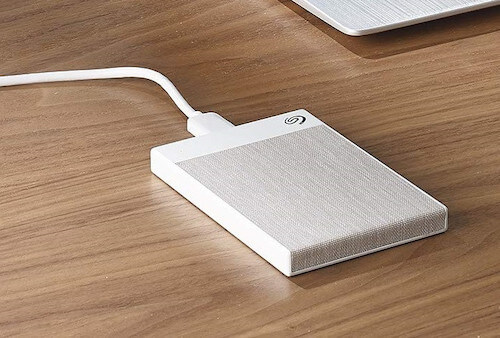
Source: seagate.com
3. Samsung T5 SSD ($119.99 - $239.99)
This Samsung SSD external hard drive is up to 2TB and is very portable. With a USB 3.0 interface, this drive is suitable for most Mac machines and has a fast data transfer speed than USB 2.0. It also comes with an encryption feature and has a 3-year warranty.
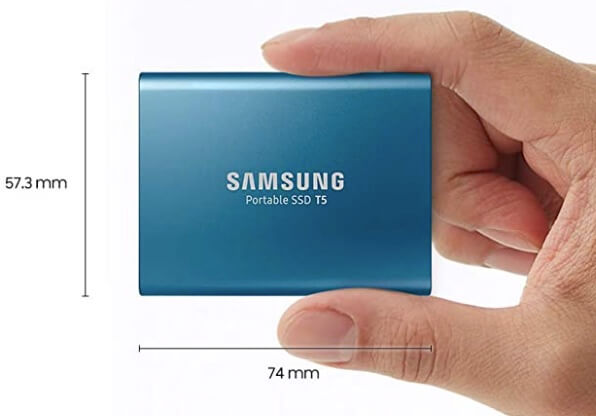
Source: SumSung.com
Related articles:
